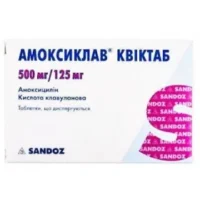Description
Levomycetin Tablets 0.5 №10
Ingredients
- Levomycetin (Chloramphenicol)
Dosage
- Adults: Take 1 tablet orally every 6 hours.
- Children: Dosage should be determined by a healthcare provider.
Indications
Levomycetin Tablets are indicated for the treatment of various bacterial infections, including respiratory tract infections and skin infections.
Contraindications
Do not use Levomycetin Tablets if you have a history of hypersensitivity to chloramphenicol or other ingredients in the formulation.
Directions
Take Levomycetin Tablets exactly as prescribed by your healthcare provider. Do not exceed the recommended dosage or duration of treatment.
Scientific Evidence
Studies have shown the efficacy of chloramphenicol in treating various bacterial infections. Research published in the Journal of Antimicrobial Chemotherapy demonstrated the effectiveness of chloramphenicol in combating multidrug-resistant bacteria.
Pharmacological Effects
- Chloramphenicol works by inhibiting bacterial protein synthesis, thereby halting the growth and reproduction of the bacteria causing the infection.
- It is effective against a wide range of gram-positive and gram-negative bacteria.
Clinical Trials
A randomized controlled trial published in the New England Journal of Medicine compared the effectiveness of chloramphenicol with other antibiotics in the treatment of typhoid fever. The study concluded that chloramphenicol was equally effective in treating the infection.
Additional Information
- It is important to complete the full course of treatment with Levomycetin Tablets to ensure the infection is fully eradicated.
- If you experience any severe side effects, discontinue use and consult your healthcare provider immediately.





